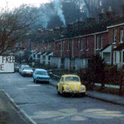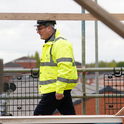The impact of the 2008 financial crash on the housing market was profound. Within just a few months, the entire structure of delicately intertwined financing that underpinned the homes in which we live unravelled and near collapse ensued. In the aftershock, the number of new homes in production plummeted, as half of smaller builders went to the wall, and the big players retreated, licking their near-fatal wounds. All of this was fuel to the flame of a problem that has dogged this country for decades: we simply haven’t built enough houses.
In 2007-8 there were 223,530 net new homes added to the stock. After the collapse of Lehman Brothers, this number fell to an all-time low of 124,720 as the country and world struggled with the mother of all hangovers. With the UK’s growing population this resulted in higher prices and rents, and a fall in ownership among the young. That most British of dreams, owning your own home, was drifting away from many.
Happily, though, the long slow battle to restore that dream is now bearing fruit. After many years of work by my predecessors, funding, supporting, cajoling and reforming, the house building industry has seen an almost unprecedented growth in output. The net new additions to the stock for 2017-8 mean we are finally back to pre-crisis levels, with leading indicators for the next year looking even better. Home ownership among the young has also stabilised after many years of downward trends.
Now we want to press on further, and make a start on tackling the repressed demand caused by decades of undersupply. The prime minister has set me a target of building 300,000 new homes a year by the mid 2020s. She has also given me the resources I need to do it, with over £44bn in committed financial support. 2019 has therefore become a pivotal year as we begin the next quantum leap for the industry and country.
In the past few months we have laid some of the foundations for prodigious growth: a brand new planning rule book designed to bring more certainty and reduce risk for developers; more resources for council planning departments; and billions for new construction technology. We have opened up more land for development and put hundreds of millions behind smaller builders. We’ve also set councils free by abolishing the cap on their ability to borrow in order to build council houses and, for the first time, we’ve offered 10-year funding deals to housing associations so they can make big commitments too. All of this is to make sure that anyone who wants to build can get building and that the wider industry can invest for the long term. No one can single-handedly deliver the homes we need. It will take energetic and diligent effort on all fronts by both the public and private sectors, all supported by a deeply committed government.
Take the Housing Infrastructure Fund, for instance, which targets billions on the bypasses, bridges, railways and drainage that large-scale house building needs, especially in the areas where demand for new homes is highest. We are also offering significant support for new settlements—garden towns and villages—and our recent call for applications closed with 100 local authorities expressing a shared ambition to build at scale.
The pipeline required to deliver 300,000 homes a year shouldn’t be underestimated. It will mean approximately one million homes in production at any one time, which in turn means between four and five million in the planning system. From London to the Oxford-Milton Keynes-Cambridge arc, to Birmingham, Manchester and the other great cities of the Midlands and north, we will need to build everywhere. If we are to do so, there is one further ingredient needed for success: the houses have to look great.
To get four million houses through planning, local neighbourhoods need to accept and even welcome them. We cannot repeat the design mistakes of the 1960s, and we must aim to build the conservation areas of the future. Too much of what we built 40 or 50 years ago is now being demolished. We must look beyond the numbers and build homes that stand the test of time.
Our “Building Better, Building Beautiful” commission is now leading work aimed at pointing builders towards a high standard of design that harmonises with its surroundings. We must not plaster the country with blank housing estates that lack heart, soul and a sense of place. We aren’t just building homes; we are building neighbourhoods.
For the first time in many years all the house-building stars are aligned: credit is cheap, more and more land is coming forward, demand is stronger than ever and everywhere I go, I sense that nimbyism is on the wane. The prime minister, who has made this mission her domestic priority, has shifted the vast machinery of government to focus on more, better, faster delivery of homes for young people. Now is the time for everyone involved to step forward with confidence to play his or her part in this, our most urgent of national missions.













